Treat And Beat Your De Quervain’s / Mommy Thumb At Home
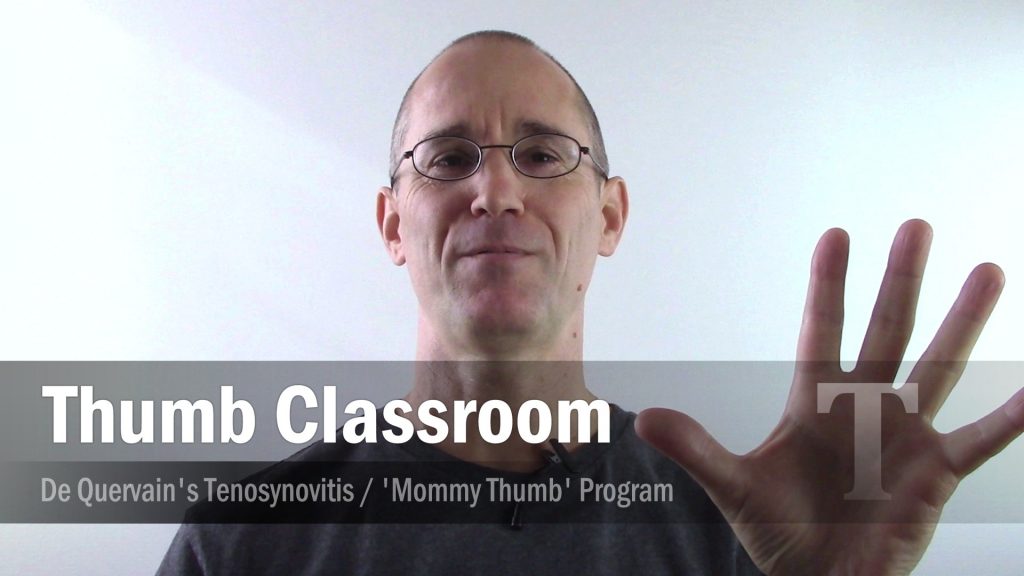
Discover how to end your vicious cycle of pain chasing and inflammation fighting – And start treating the true, underlying cause of your De Quervain’s, “Mother’s” or “Texter’s” Thumb yourself, at home by watching and following this step-by-step HD video program.
(Here’s how to sign up if you’ve already read this and are ready to get started!)
Does your thumb hurt?… Terrible, stabbing, searing pain every time you pick up your baby, your phone, game controller, golf club, fishing pole or even your coffee mug?
It has many names: Mommy’s Thumb, Texter’s Thumb, Gamer’s Thumb – Technically, it’s De Quervain’s Tenosynovitis… But, regardless what it’s called – It hurts like hell and it can be really disruptive to your life, as you know!
You’ve tried icing it, right? You’re probably taking more Ibuprofen than you’d really like, I would guess… And you’ve been told to wear that stupid, awkward brace around, no doubt…
Maybe you got desperate enough you resorted to getting a Cortisone Shot – But it just wore off after a few weeks…
And you might even be starting to worry you might need surgery at some point if it doesn’t get better soon!
You’ve done your best to follow the common wisdom and you’ve tried the conventional treatments but has anything helped you break out of the vicious cycle and actually recover?
If your answer is a frustrated, resounding “NO!” then maybe it’s time to consider a different course of action.
But, first, we need to talk about the real cause of this incredibly annoying, disruptive thumb injury, in order to see where we need to change course…
What’s Really The Cause Of Your Thumb “Tendonitis?”
When you’re dealing with a persistent tendon issue, like De Quervain’s, you’re not facing a straightforward, normal, ‘acute’ injury like a cut, bruise or fracture with a steady, predictable rate of recovery.
You’re dealing with another animal altogether; one with a completely different nature:
A Tendinopathy – (A term broadly referring to a range of ‘chronic’ – as in persistent – tendon pain issues.)
This is a gradual, cumulative and very crafty tendon injury – It sneaks up on you.
(Yes. I understand that your pain MAY have appeared rather suddenly one day – but I guarantee you there was a gradual “build up” process over weeks or months leading up to the point when it started to hurt.)
And, right off, we need to bust a very persistent myth:
Despite everything you’ve heard, the vast majority of these persistent tendon issues are, wait for it…
NOT inflammatory conditions! (Not primarily, anyway.)
This is not to say there’s no inflammation present, (whether it’s called Tendonitis or Tenosynovitis, in the case of De Quervain’s – or something else, like Epicondylitis, referring to Tennis or Golfer’s Elbow)…
The point is that inflammation (and the swelling and pain it can produce) is a symptom – a reaction – Not the cause of the problem.
One of the biggest pitfalls in the conventional treatment approach, and where most sufferers start to go wrong, is this obsession with reducing or “fighting” inflammation.
In the same way that if you have a fever, your elevated temperature is your body’s natural reaction to an infection and its attempt to fight it.
Inflammation is the first stage of healing whenever you have injured tissues. It’s a natural and necessary response to injury, irritation (and infection.)
So, if inflammation is a part of the healing process…
Literally, a symptom of your body’s attempt to heal…
Then HOW in the world can inflammation be the real problem – or the cause of the problem?
How many times have you heard that tired, old admonition, “You need to get the inflammation down first so it can heal” or similar B.S.
In other words, suppress your body’s natural healing response to help it heal. What?? (Think about that!)
So, WHY are you being told to “fight” inflammation with pills, gels, ice and shots!?
If you can get a simple, honest answer it’s:
“Because drugs make you FEEL better!” (For a little while.)
They say these anti-inflammatory tactics “break the cycle of pain” but they really just suppress your pain temporarily.
They don’t break the cycle CAUSING the pain.
The causal dynamic, (the underlying pattern causing the injury and the pain) is still there and left untreated it will just cause everything to flare right back up again the minute the pills, ice, gel, shots or other “inflammation treatment” wears off.
The Missing Link To Understanding And Treating De Quervain’s
When you read official medical descriptions of De Quervain’s, you get a hyper-focused and limited view of what’s going on.
There’s little, if any, explanation or understanding of the larger cause.
But there is a larger dynamic at work, involving muscles, tendons and other tissues that are compounding into the vicious cycle that’s causing your thumb pain.
And the biggest factor is something you’ve probably never hear of:
‘Adhesions’ – Adhesions are areas where different layers of tissue are sticking and binding to each other.
Why is this the missing factor? Because adhesions are not broadly recognized as an issue and most treatments do not address them.
Conventional medicine can’t see adhesions and couldn’t treat them even if they were visible on Xrays or MRIs.
(Except in extreme cases where the adhesions or scar tissue gets so dense and severe it needs to be surgically released.)
And, yes, the adhesions in the case of De Quervain’s can get so bad that surgeons will happily offer to do a surgical release.
The question is, however: Is this extreme measure really necessary?
Well, I don’t believe it is for the vast majority of De Quervain’s or Mommy’s / Texter’s Thumb sufferers.
But let’s go back to how all of this gets started in the first place.
The Insidious Causal Dynamic
What happens is that adhesions tend to form slowly, “quietly” and insidiously within and around muscles, tendons and other tissues.
This happens in many places in our bodies as we age and it’s a big cause of loss of mobility.
However, it happens much faster in specific areas of the body under persistent and excessive tension, load or stress.
(When this becomes a source of chronic pain, it’s often referred to as an ‘Overuse Injury’ or ‘Repetitive Strain Injury’ / RSI – Especially when it involves the hands.)
The chronic muscle tension that builds up from how we use our hands and thumbs is a big driver of this.
As the muscles get tighter with chronic tension they also get denser, more shortened and more restricted from the adhesions building up and, eventually, the tendons start to suffer.
And thumb / finger tendons have a special feature and added complexity, which is the hallmark of De Quervain’s:
Synovial Sheaths – These sheaths are the protective, outer “tubes,” which cushion, lubricate and protect your vulnerable thumb and finger tendons.
Your tendons are supposed to glide smoothly back and forth – connecting the muscles in your forearm to the joints of your fingers and thumb, which they pull on and move.
(Most of those muscles are in your forearm not in your hand, by the way.)
And these long thumb and finger tendons are very exposed and vulnerable where they cross the wrist, which is why they have those sheaths: For additional protection (FYI, most tendons don’t.)
And a big part of the dynamic of a Tenosynovitis injury is that your tendons actually develop adhesions to their own sheaths!
The worse the adhesions get, the more resistance and friction occurs between your tendons and their sheaths.
Picture a rope running through a tube or hose that keeps getting smaller and smaller.
As you can imagine, this dynamic eventually causes irritation, swelling, more pressure and friction, more adhesions and, of course, pain!
It becomes self-perpetuating, vicious cycle.
It also, unfortunately, gets labeled as Tenosynovitis:
- TENO = Tendon (the “ropes” that connect muscles to bones)
- SYNOV = Synovial Sheath (the tubes the tendons run through)
- ITIS = Inflammation (the reaction to increased friction/damage)
This a poor label because inflammation gets incorrectly blamed or seen as a primary factor and then targeted for attack with pills, ice, gels and shots.
Perhaps a better name would be Teno-syno-adhesiO!
Again, the inflammation (and pain) is a symptomatic reaction to the tension / adhesion / irritation pattern – NOT the cause of it.
From my perspective, (as a Bodyworker, who works on muscles and tendons) these adhesions – between the tendons and their sheaths AND in the muscles “upstream” in the forearm – are the most important issues to deal with.
And once this vicious cycle is broken; the tension and adhesions are released and the tendons are gliding nicely back and forth, unrestricted in their sheaths, the result is:
No more irritation, no more inflammation and no more pain.
Again, this is the unrecognized, missing link in most treatment protocols.
And even treatments that do address ‘Soft Tissue’ issues in the muscles and tendons often fall short because they’re so inefficient – if not completely useless when it come to releasing adhesions.
I suffered from this condition (Extensor Tenosynovitis) in both wrists back in the early 90s and it nearly derailed my career as a Bodyworker.
No one I sought for help, including Doctors and Physical Therapists, knew what to do.
I even got so desperate after a year that I tried this crazy “therapy” that involved being stung repeated on my wrists by bees! (Long story.)
But I’ve never had any trouble with it since, and as I write this it’s 2024!
You Can Learn How To Release Your Adhesions
The good news, however, is that releasing the adhesions in and around your synovial sheaths is a relatively easy thing to do yourself.
It’s something most practitioners don’t know how to do – but at the same time, it’s pretty easy to learn to do this yourself and I can show you how.
That’s not to suggest that De Quervain’s / Mommy’s Thumb / Texter’s Thumb is a fast and easy thing to overcome. I don’t want to make any exaggerated claims here.
However, if you’re highly motivated to overcome this painful, annoying condition…
And you’re willing to put in the time to watch a few videos, learn a few techniques and work on your own thumb…
Then I believe I have the tools for you – Because working on your own muscles and tendons on a regular basis is a very powerful thing.
(Not to mention a lot less expensive than going to see someone for treatment once or twice a week.)
But, don’t worry… You don’t need to become an expert at these techniques or even highly skilled – You just need to get the basic idea and apply them fairly consistently.
These thumb tendons are in an easy area to reach and self-treat with your other hand – and the primary release technique doesn’t require a lot of pressure or force.
Assuming your other hand isn’t completely wrecked too – In that case, you simply need a “helper” to watch the video lessons and work on you instead.
Here’s What You’ll Get In This NEW Program:
You’ll learn techniques to release all the major muscles of the thumb. (Why all the muscles and not just the ones involved in De Quervain’s?)
Because these problems are never just about the muscles and tendons that are in pain!
(There is always a larger pattern of imbalance that includes other, related muscles and often between opposing muscles of the thumb, too.)
You’ll learn how to release the adhesions between your thumb tendons and their sheaths – as well as around and between other layers.
(This is not basic massage – These are advance release techniques that are designed specifically to release adhesions – Not to just rub and relax muscles.)
You’ll also learn to release all the major muscle and tendons in on both sides of your forearm
Why? Because some of those muscles will invariably be involved in your pattern of overuse. This varies from injury to injury / person to person, of course.
It’s also not uncommon to have Tennis Elbow along with De Quervain’s – And sometimes Golfer’s Elbow.
OR to have issues with the other tendons on the back side of the wrist that go to your wrist and finger joints like I had back in the 90s.
(OR a specific version of that known as ‘Intersection Syndrome’)
These are all just different, specific names for what is essentially the same dynamic causing the same problem:
Adhesions between tendons and their own sheaths or between different LAYERS.
With this technique you can release all of the layers of adhesions and restore full, normal, pain-free mobility!
I’m confident you will appreciate the amount of close-up detail and the step-by-step instructions.
Here’s Everything You Get As A Member:
- The thumb / De Quervain’s program,
- The full Tennis Elbow program,
- The full Golfer’s Elbow program,
- The first 3 new videos in the Shoulder / Rotator Cuff Program,
- Several elbow-related bonus lessons, including Biceps and Triceps muscle releases,
- Access to a private, members-only forum
The Full Ten-Lesson Tennis Elbow Program Is Included
The Pin And Stretch Technique and the stretching technique lessons in the Tennis Elbow program are going to be an essential part of your thumb program. (And if you do happen to have Tennis Elbow as well as your thumb injury, you get the rest of the Tennis program, too!)
The Full Eight-Lesson Golfer’s Elbow Program Is Also Included
The Pin And Stretch Technique here in the Golfer’s Elbow program is also going to be an essential part of your thumb program. (And if you do happen to have Golfer’s Elbow as well as your thumb injury, you get the rest of the program, too!)
Members Q & A, Support And Networking Forum Included
Your membership also features a members-only forum. You can ask me questions about the program – as well as talk with other members.
(As available. I can’t always provide immediate answers – and can’t guarantee I will always reply – but I try very hard to be regularly available to members and have an excellent track record responding, as you’ll see!)
If you need more immediate, personal attention, please choose a package that includes phone or video consultation time with me. (You can also purchase consult time later at a member discount if you need it.)
What about testimonials? (Good question.) Since this is a brand new program, I don’t have any yet. (Let’s hope you can be my first!) However, I’ve been helping Tennis and Golfer’s Elbow sufferers get out of pain for years.
So, in the meantime, feel free to take a look at all the success stories I’ve received from members about those programs to give you some idea what you can expect: Tennis Elbow Classroom Success Stories Page
Backed By A 90-Day, 100% Money-Back Guarantee
I personally guarantee your 100% satisfaction with the program – If you’re not satisfied – for any reason – just let me know within 90 days of purchase and I’ll refund your membership fee – No hassles – No questions asked! And here’s the link to the refund form so you know where it is if you need it: Here’s the refund form!

How To Become A Member And Get Started Right Now:
Just click ‘Add To Cart’ below (to pay by credit card) OR the PayPal button, get your membership, log right in and start the program.
There are NO recurring, dues… Just the single payment of only $57. for 1 full year’s access.
Who This Program May Not Actually Be A Good Fit For
This program may not be for you if your pain stems more from arthritis of the joints of your thumb than your muscles and tendons.
Although it still may be beneficial in the case of mild to moderate degenerative Osteoarthritis – NOT Rheumatoid. You’ll need to work a lot longer to see any improvement, however.
Doing the release work for your thumb, finger and wrist muscles may take a lot of the pressure off your wrist and thumb joints, slowing the progression and providing some relief.
This program may not be for you if you’re not willing to give up the pills, ice and brace – The symptom chasing / inflammation fighting.
Better to decide whether you want to proactively address the underlying causes – OR continue to “chase symptoms” because these approaches are contradictory.
Or if you have terrible pain in both thumbs / hands and don’t have enough strength in one hand to work on the other.
Or if you have systemic health issues that impede your ability to heal, such as type 2 Diabetes.
But even if you’re not sure this program is right for you or not, it IS backed by a 90-day 100% money-back guarantee, so please feel free to give it a try.
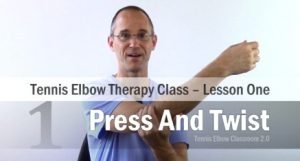
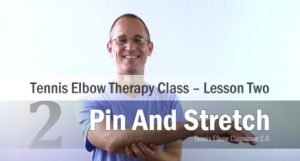
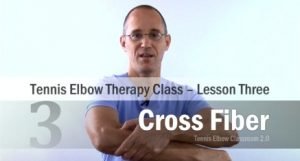
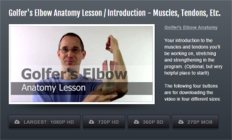
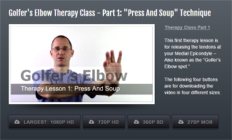
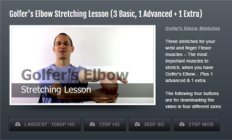
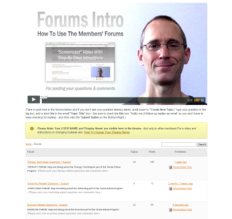 Your membership also features a members-only forum. You can ask me questions about the program – as well as talk with other members.
Your membership also features a members-only forum. You can ask me questions about the program – as well as talk with other members.

